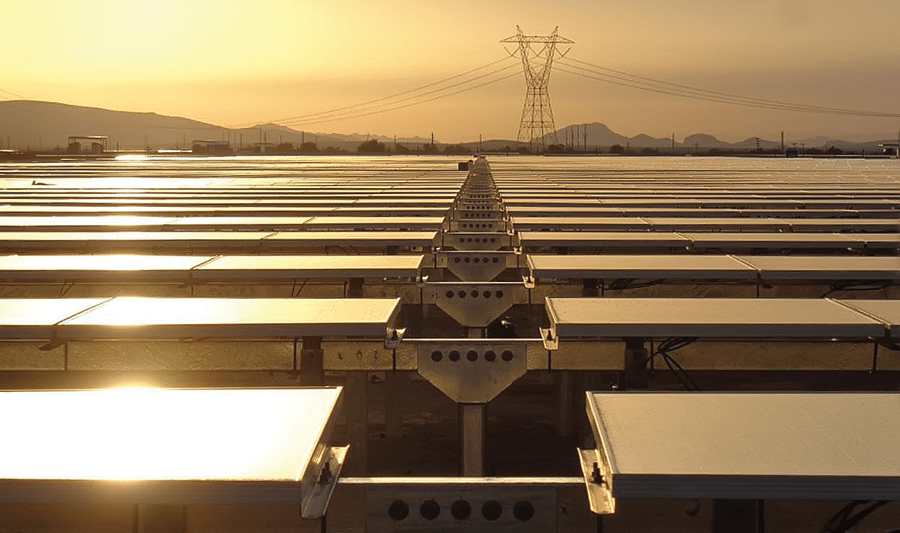Debates over energy consumption, reduction and alternatives occur frequently in the increasingly “green” world. Arizona stands as a leader in the alternative energy market with the use of solar, geothermal energy and natural gas as alternatives to more traditional energy providers. Even through the decline of green building projects, as reported by Forbes, major companies and builders such as APS, SRP and Adolfson & Peterson (A&P) have completed large alternative energy projects in the last year.
Arizona Public Service, through the APS AZ Sun Program, and McCarthy Building Companies completed its third solar project, a large solar installation called the Hyder II in Yuma County last year. It uses more than 71,000 single-axis tracking photovoltaic panels to generate 14 megawatts of solar energy, which is enough to serve 3,500 Arizona homes. The project set a record year for APS with 410 megawatts of solar power and represented the largest annual increase in solar capacity, nearly tripling the total from 2012. APS contains more than 750 megawatts of solar capacity on its system after investing nearly $1B in solar projects, and serves more than 185,000 Arizona homes. Another large solar project built last year is the Fry’s Marketplace PowerParasol, which shades 74,800 SF, including 220 parking spaces, driveways, aisles, grocery cart stations and sidewalks. It diminishes the heat-island effect, enables light passage to allow the growth of plants and generates 1,013,140 kilowatt hours of solar energy.

Geothermal energy is another popular source of renewable energy in Arizona. Both SRP and A&P developed geothermal projects in 2013. Geothermal energy produces electricity from naturally occurring geothermal fluid, and steam forms when production wells access superheated water reservoirs thousands of feet beneath the Earth’s surface. As opposed to wind and solar that are affected by the weather, geothermal is a more reliable source of renewable energy. SRP purchased 50 megawatts of geothermal energy from CalEnergy. The project will annually offset 460 million pounds of carbon dioxide emissions, the equivalent of 40,000 cars. SRP also has an agreement to purchase geothermal energy from the Hudson Ranch facility in California and Utah’s Cove Fort plant.
A&P’s latest geothermal project is Lookout Mountain Elementary School where it constructed a closed-loop system that allows the ground’s heat to warm the building during the winter and reverse the process in the summer by transferring heat back into the ground. The system does not use any chemicals, untreated water or Freon. A&P expect it to last up to 30 years and the underground wells to last up to 75 years. The classrooms’ energy consumption will be reduced by 40 percent and the low maintenance and operations costs will save the school district up to $1.8M over the next 20 years.
Although there are many green projects occurring, there is a decline in contracts. Bryan Dunn, senior vice president of A&P, states that “the disconnect between the demand and not seeing as many ‘green contracts’ is that there are more and more building owners viewing a formal certification process as expensive and lengthy. Tight budgets don’t allow for the upfront costs associated with a formal green certification. Instead, they are looking to incorporate the energy saving and durability aspects of green building into their projects without a formal certification of the building.”
Dunn also says solar technology may be played out. He is seeing trends with technology, such as waste-to-energy, bio-mass and bio-gas and geothermal energy. “Clients are considering several types of alternative technologies on single projects…Utilizing multiple solutions also keeps overall and total project costs down, benefiting everyone in the long run,” he adds.
Besides the cost of green projects, Scott Canada from McCarthy explains that projects may be slowing because of supply and demand. “There may be a near-term slowing of new projects while Arizona’s energy consumption begins to grow again, with the improving economy. Energy, including renewables, often cycles between a period of expansion and pause,” he says, adding that solar costs are continuing to drop, making it an attractive energy source, especially with the abundance of sunshine in Arizona. In its latest forecast, APS predicts renewable energy, gas in particular, will double in Arizona by 2029.




